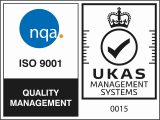Why is a Schedule of Condition so Important?
A schedule of condition defines the state of each element of the property at the start of the lease.
Importance of a schedule of condition before signing a lease
Commercial tenants normally have an obligation to keep the property they are renting in a good state of repair. Typically, this is a legal covenant associated with tenants taking on a full repairing and insuring (FRI) lease or an internal repairing and insuring (IRI) lease.
FRI contracts are the most common. By taking on a property on with FRI liability, tenants are taking on all responsibility for repairs and insurance. IRI leases are fairly rare, and obligate tenants to repair internal items only. This means that if there are issues with external elements like the roof, the landlord holds responsibility for the relevant repairs. Importantly, the repairing obligations of either lease type can apply even if the repairs were already required when the lease was granted.
A solicitor can support tenants with negotiating so that a new lease specifies that items already in disrepair are the landlord’s responsibility, and not the obligation of the incoming tenant. To do this effectively, a photographic schedule of condition, evidencing the state of all elements of the property, can be invaluable. In the absence of a schedule of condition report, it can be very difficult to ascertain the exact state of the building, and to later prove what state the building was in when the tenant took the lease on.
How a schedule of condition report can protect a tenant
The tenant can use the information in the condition report when negotiating the lease. For example, they can use it to ask the landlord to rectify defects before the lease is signed, or to insist that certain items are excluded from the repair obligations. This would mean that the tenant could not be made liable for those defects at lease-end. Furthermore, by evidencing the exact state of the property when the lease was taken on, the tenant can evidence that any pre-existing alterations, whether decorative or structural, were already in place at the start of the lease.
The solicitor and incoming tenant may also request that items that were already starting to deteriorate, or that were close to failure before for the start of the lease, are excluded from the repair obligations. A example could be a roof that was nearing the end of its serviceable life and may need replacement by the end of the tenancy period. Again, the schedule of condition is important here to illustrate the condition at the start of the lease. A pre-acquisition survey could also be considered to get detailed insight into the condition of major structural elements.
A schedule of condition report can therefore form an important part of the lease contract. In conjunction with their solicitor, the tenant will use the report to define the state of the property at the start of the lease and the expectations placed upon the landlord and tenant. The schedule of condition report can then be annexed to the lease.
Schedules of condition are also crucial negotiating tools at the end of a lease. They give the tenant and their solicitor solid evidence to contest any claims made by the landlord regarding dilapidation liabilities, should they believe them to be incorrect. By their nature, terminal schedules of dilapidations can often run into many thousands of pounds; therefore, a thorough photographic schedule of condition can often save a tenant many times the initial cost of the survey.
Want to know more?
We're here to help
If you would like to discuss a potential project with our consultants or get advice on any aspect of building surveying or engineering, please don’t hesitate to complete our contact form, call us on 0333 202 6386, or contact one of our regional offices.



